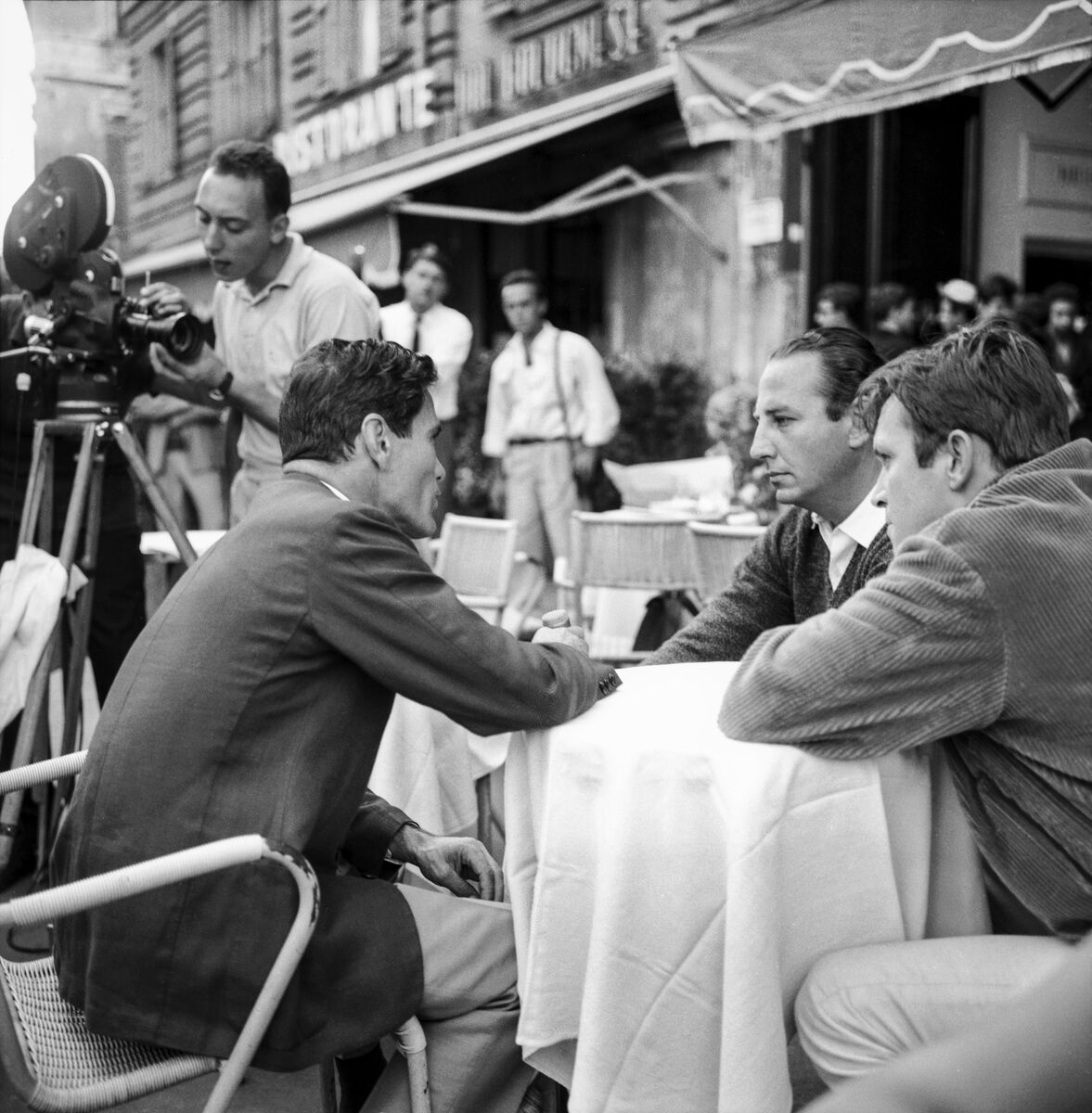Films
Achille Mauri on Fabio Mauri and the Post-War Italian Avant-Garde
At home in Milan, Achille Mauri, brother of Fabio Mauri, traces the cultural scenes of post-war Rome and Milan, a time when these two cities were home to some of the most remarkable thinkers and artists of the 20th century. ‘It was a magical moment... you’d get the chance to meet the greatest artists of that era.’
Our historical presentation at Frieze Masters takes the fascinating narrative of Fabio Mauri, an artist, writer, producer and intellectual, alongside the history of his family—a publishing dynasty which thrived on close connections to radical Italian art, poetry, cinema, philosophy and literature—as a starting point to explore Italian visual culture, its influences and the defining ideas behind it. The project’s title, ‘Before or After, at the Same Time: Rome, Milan, and Fabio Mauri, 1948-1968’, refers to Mauri’s statement: ‘I can’t stay in step with my time. I am either before or after it, at the same time.’ (Fabio Mauri, Ideology and Memory).
The social and political aftermath of the Second World War engendered two highly energetic pockets of creativity in the cities of Rome and Milan. Mauri—a multi-disciplinary artist who resisted categorization—acts as the point of introduction to the artistic practices that emerged from each of these distinct cultural, economic and political scenes. The project examines and, in cases, re-examines the artistic milieu surrounding Mauri which included Carla Accardi, Franco Angeli, Enrico Baj, Alberto Burri, Alighiero Boetti, Enrico Castellani, Dadamaino, Piero Dorazio, Tano Festa, Lucio Fontana, Jannis Kounellis, Piero Manzoni, Gastone Novelli, Mimmo Rotella, Mario Schifano, Giulio Turcato and Cy Twombly.
‘It was a magical moment... you’d get the chance to meet the greatest artists of that era.’

Pier Paolo Pasolini, Fabio Mauri, and Umberto Orsini, Caffè Rosati, Piazza del Popolo, Rome, 1960 © Archivio Elisabetta Catalano

Lucio Fontana, Concetto Spaziale, Attese, c. 1967 © Lucio Fontana/SIAE /DACS, London 2019
Fabio Mauri lived in Milan during its post-war reconstruction following the defeat of Fascism before moving to Rome in 1957. At this time Milan was an epicenter of young artists reinventing themselves, setting aside Art Informel and embracing a conceptual agenda defined by artists. Among these Lucio Fontana forged new ground with punctured paintings and ‘spatial environments’ that explored the void and the absolute, as seen in the mesmerizing ‘Concetto Spaziale, Attese’ (c. 1967). Moreover, Piero Manzoni not only dislocated the painted surface from the hand of the artist, banishing all pictorial content and colour in his works, such as ‘Achrome’ (c. 1960), but alongside Enrico Castellani he instigated the short-lived but influential Azimut gallery and Azimuth review in 1959.
While Milan was firmly seated in Europe, Rome was considered the entry to the United States. The works of Alberto Burri, like ‘Combustione Plastica’ (1967), created using unorthodox violent actions and provisional materials, made immediately following the war, generated new possibilities and radical ways of thinking for the school of artists who gathered at Caffè Rosati on the Piazza del Popolo. Mauri, who lived around the corner, fraternized here with Jannis Kounellis, Mimmo Rotella and Gastone Novelli and did much to connect the city’s flourishing literary and artistic scenes.

‘Before or After, at the Same Time: Rome, Milan, and Fabio Mauri, 1948–1968’, Hauser & Wirth Publishers, 2019

Mimmo Rotella, Senza titolo (Untitled), 1961 © DACS 2019. Photo: Todd White
While these artists might appear loosely affiliated, they all moved towards a new realism that embraced rapid industrialization, the explosion of mass media and dramatic social and political change. This experimentalism encompassed new materials—Giulio Turcato was among those to incorporate found objects into his work, while Carla Accardi and Mario Schifano experimented with the products of industrial design and Mimmo Rotella’s engrossing work featured snatches of text, for example in ‘Senza titolo’ (1961). The collision of European and American practices in paintings can be seen in the work of Novelli, whose instinctive pieces share much in common with Cy Twombly’s system of signs and allusions. Novelli was introduced to Twombly, alongside Willem de Kooning and Robert Rauschenberg, in the late 1950s when these artists were working in Rome.
Edited by Ben Eastham, the Hauser & Wirth Publishers book ‘Before or After, at the Same Time: Rome, Milan, and Fabio Mauri, 1948–1968’, features essays and newly commissioned texts by Giorgio Agamben, Ilaria Bernardi, Barbara Casavecchia, Pierre Testard, Andrea Viliani and Laura Cherubini. An interview between Achille and Sebastiano Mauri discusses the enduring and near unbelievable family history; a historic article by Fabio Mauri ‘In 1960 the 1950s Were 10 Years Old’, brings his prescient character to life and never before published and translated letters between Silvana Mauri, Fabio’s eldest sister, and Pier Paolo Pasolini, the filmmaker, writer and poet express a remarkable intimacy and honesty.
– Explore the historical presentation ‘Before or After, at the Same Time: Rome, Milan, and Fabio Mauri, 1948–1968’ at Frieze Masters, 3 – 6 October 2019. Published to coincide with this immersive display at Frieze Masters, the title ‘Before or After, at the Same Time: Rome, Milan, and Fabio Mauri, 1948–1968’ combines commissioned essays and first-person accounts with translated writings from the period to explore the ideas circulating in Rome and Milan in the 1950s and 1960s.
